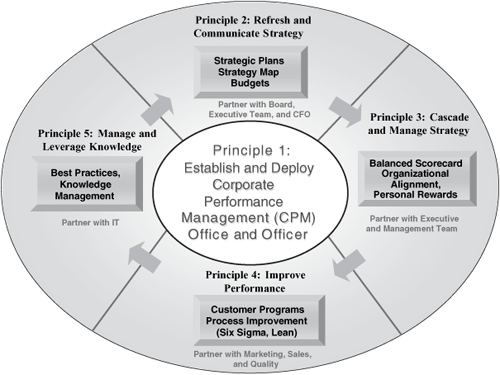Chapter 6. Principle 3: Cascade and Manage Strategy
When you can measure what you are speaking about, and express it in numbers, you know something about it; but when you cannot measure it, when you cannot express it in numbers, your knowledge is of a meager and unsatisfactory kind. | ||
| --LORD KELVIN | ||

This chapter reviews award-winning case studies focused on Principle 3, Cascade and Manage Strategy. The Crown case study will provide both the Crown specific best practices and expand discussion on the normative Principle 3 best practices (shown in Exhibit 6.1) learned from the collective companies researched.
Table 6.1. Principle 3: Cascade and Manage Strategy Best Practice Summary
Best Practice | Description |
|---|---|
Partner with business owners | Partner with line and staff leadership team members to gain support and influence as partners to help them achieve results. |
Develop level 1 Balanced Scorecard (BSC) | Translate strategy into level 1 BSC measures and measure targets at the highest organizational level in your organization (corporate, government agency, or non-profit). |
Leverage proven BSC of comparable methods | Observe BSC or comparable design parameters assigning one to two measures to each strategy map objective. |
Cascade BSC to lower levels | Cascade and align level 1 BSC to levels 2, 3, 4, and so on depending on organizational and accountability structures. |
Align support services | Identify and define measures ... |
Get Five Key Principles of Corporate Performance Management now with the O’Reilly learning platform.
O’Reilly members experience books, live events, courses curated by job role, and more from O’Reilly and nearly 200 top publishers.

